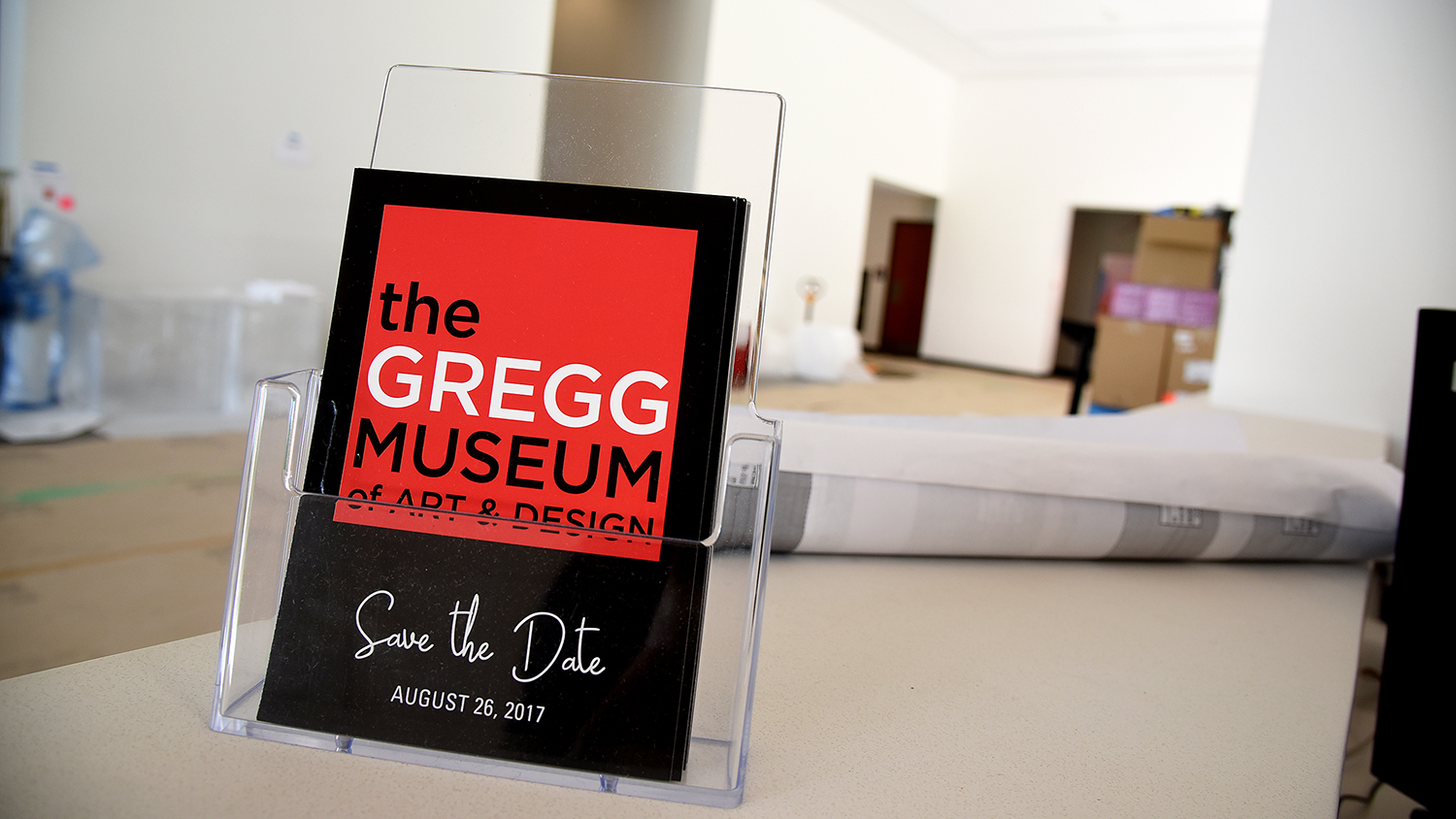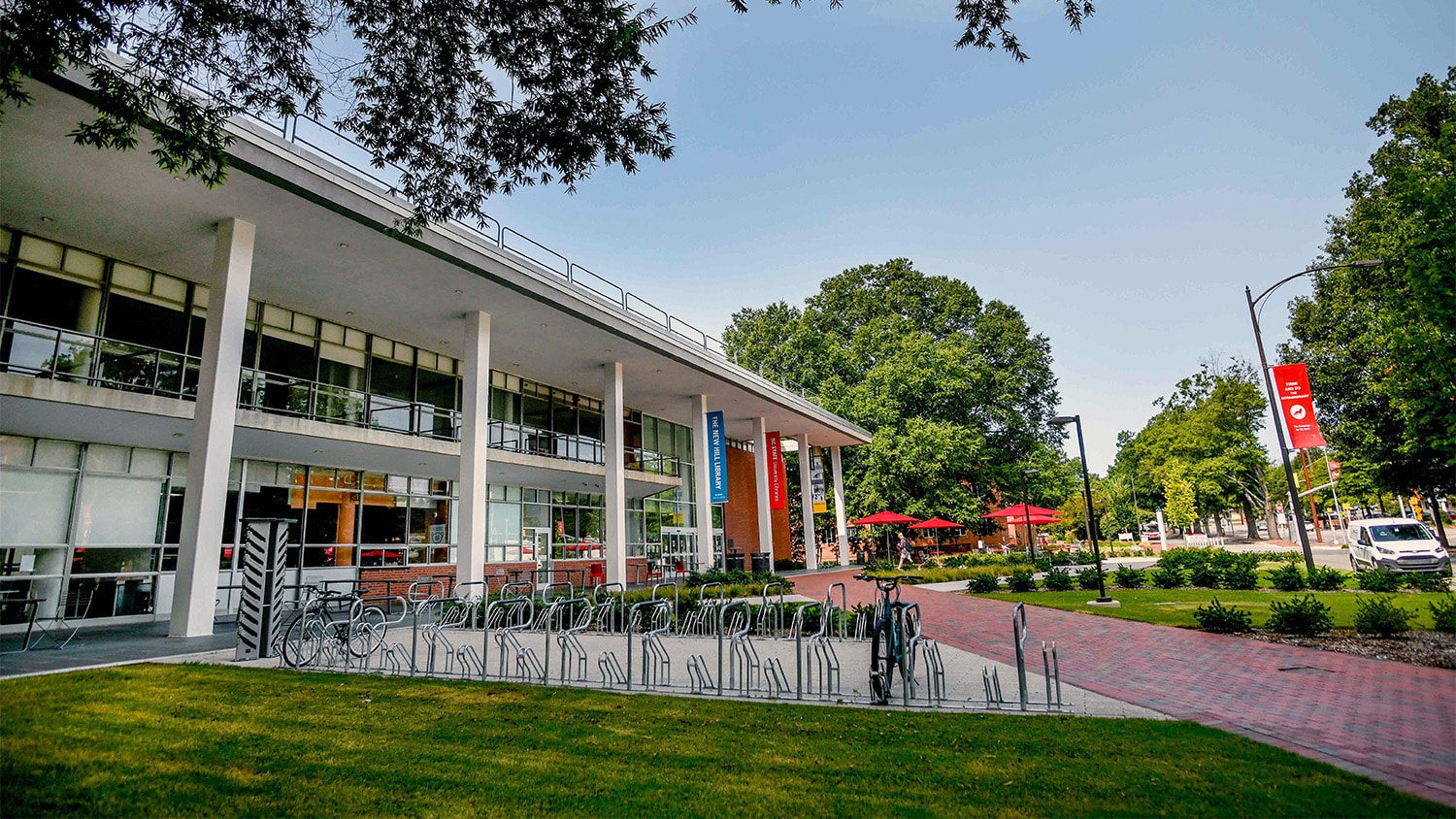Gregg Museum Reveals First-Class Renovation

If you’re new to NC State, you might be forgiven for not knowing the university has an art museum. The Gregg Museum of Art & Design used to be located in the old Talley Student Center, but that facility closed in 2013 for renovations. A couple of years later, the new Talley Student Union reopened — without the Gregg Museum.
Museum director Roger Manley recalls how he learned about the fate of the old facility. “Back in 2010 my boss told me he had some good news and some bad news,” Manley says with a wry grin. “The good news was, we’re getting a brand-new museum. The bad news was, they’re going to tear down the old one, and we’re going to have to put everything in storage while we build the new one. It’s been an adventure.”
That adventure is about to reach a successful conclusion when the Gregg Museum holds its long-awaited grand reopening celebration on Saturday from 10 a.m. to 3 p.m. The new Gregg is located at 1903 Hillsborough St. in a complex that incorporates the historic chancellor’s residence, across Pullen Road from the Belltower. The residence has been completely renovated and updated, and now includes a 15,000-square-foot LEED-certified expansion that houses most of the exhibits.
Saturday’s festivities will begin when Chancellor Randy Woodson hosts a ribbon-cutting ceremony at the museum’s main entrance. Afterward, guests will be invited inside to explore the museum’s three opening exhibits and take docent-led tours of the new facility. Artists will be on-site performing live demonstrations, including pottery making by Jennifer Siegel and wood turning by Zach Gregory, both of the Crafts Center; and bamboo sculpting by Will Hooker, a professor of horticultural science.
Other opening-day activities will include a participatory environmental art project led by artist Bryant Holsenbeck, featuring art made from recycled plastic bottles, and tours of an outdoor pollinator garden designed and installed by students in the Department of Horticultural Science, under the supervision of Anne Spafford, associate professor of landscape design.
The Beginnings of the Collection
The Gregg’s renovation and expansion represent the culmination of a story that began decades before the museum itself even existed.
“As far back as the 1930s, people started donating art to NC State,” Manley notes. “The university started accumulating art before it realized it was accumulating art.” That accumulation continued through the mid-1970s, when staff and administrators started realizing they didn’t know what art they had on campus — and they weren’t tracking it very well. “Things started disappearing because a professor would come to work here, and there’d be a painting hanging on the wall in their office, and when they retired 15 or 20 years later, the painting would go home with them because they forgot they didn’t bring it,” Manley explains.
The artwork quit growing legs when the university hired its first curator, Ben Williams, in 1979. He found close to 300 works of art scattered around campus, and as soon as he entered those items into a catalog, they became NC State’s inaugural art collection. In 1982 Charlotte Brown (now Charlotte Wainwright) took over from Williams and used that collection as the foundation to build an organization, Visual Arts Programs, that put on programming and held small symposia. The program displayed its collection in an area called the Visual Arts Center, located in an anteroom of the old Talley Ballroom. Then the program got its own Gallery of Art and Design, which was an addition tacked on to Talley.
In 2007 the gallery was renamed the Gregg Museum of Art & Design in honor of longtime museum supporters John and Nancy Gregg. Brown retired as the museum’s director in 2009, and Manley arrived in 2010 to shepherd the Gregg through its biggest transition yet.
A New Home
Luckily for Manley and the Gregg, Woodson arrived on campus around the same time.
“Within their first 10 days on campus, the Woodsons made a point of visiting the Gregg, partly because Susan Woodson is an artist, and they wanted to check out the local arts scene,” Manley says. When the Woodsons got ready to move into the Point, the newly constructed chancellor’s residence, they proposed using the historic chancellor’s residence as the location for the new Gregg Museum, and Susan Woodson became the honorary chair for the campaign to raise the money necessary to pay for the renovation.
“As it turned out, the historic residence was not only the best location with the most potential, it was also the most cost-effective option,” Manley says. “So that clinched it. NC State likes a bargain because we’re good stewards of our resources.” The total project cost was $9 million, $4 million of which was donated by private supporters. Wake County and the city of Raleigh provided crucial support, and the university covered the remaining $4.6 million with non-state-appropriated funds. (Learn more about Robert Keith Black and J. Ormond Sanderson Jr.’s extraordinary planned gift to support programming, exhibitions, publications and art acquisitions at the Gregg.)
The renovation and expansion was designed by the Freelon Group (which has since been acquired by Perkins+Will), led by College of Design alumnus Phil Freelon, who was lead designer for the Smithsonian National Museum of African American History and Culture in Washington, D.C.
“It was serendipity that a firm founded by an NC State grad happened to be the one that got the job,” Manley says. “We really liked their proposal the best of all the ones we reviewed. And I really enjoyed working with those folks. Designing the museum was the fun part.”
Form and Function
Manley’s experiences in a number of famous art museums helped him arrive at a design rationale for the new Gregg Museum.
“I determined early on that I didn’t want a museum that dwarfed the art,” he says. “A lot of art museums are all about the building, like the Guggenheim museums in Bilbao and New York. Those buildings are like giant artworks, making it hard to focus on the art inside them. I wanted a building that was very clean and that got out of the way of the art.”
Manley also wanted the new Gregg to give both the museum and its visitors maximum flexibility.
“A lot of museums are designed with what I would call the Ikea approach: You have to go through every room to get to the room you want,” he explains. “The Gregg’s new addition is designed with the lobby as the central point, and the other rooms radiate off of it. Visitors can easily walk into any room they want. That also gives us the flexibility to close off one gallery while we change out a show and leave the other galleries open. We can have a new show every few months without ever closing the museum.”
Manley says he hopes people in the Raleigh area will take advantage of the new facility’s on-site parking to come and see what the Gregg is all about.
“We’re kind of a nexus between campus and the rest of the outside world because of where we are, so it’ll be a place where people can meet up and hang out,” Manley says. He also wants students to feel like they can use the museum as a study space. “Art doesn’t have to be the only reason for coming here. I’m hoping people will feel like bringing a book to read while sitting in a gallery or in a comfortable chair in the lobby. We’ve got Wi-Fi everywhere, and when the weather’s nice, all the outdoor seating in the gardens will be an option too.”
Soon the museum will make itself available as an event space, both for campus entities and on a rental basis for events such as weddings. The gardens will also serve as a venue for outdoor movies shown on an inflatable screen.
Manley hopes most of all that people will come to the Gregg for an experience of the real world that you can’t get from a device you carry in your pocket.
“We’re in such a digital age now that a lot of people’s experience is all on screen,” he says. “People walk around campus staring at their devices and missing the world around them. But when you come to an art museum, you’re able to have a direct experience of a real object, which is different from seeing it online. There’s a kind of honest reality about standing in the presence of a 4,000-year-old Coptic robe or a Peruvian mummy wrapping. It opens up the world to you.”
- Categories:


